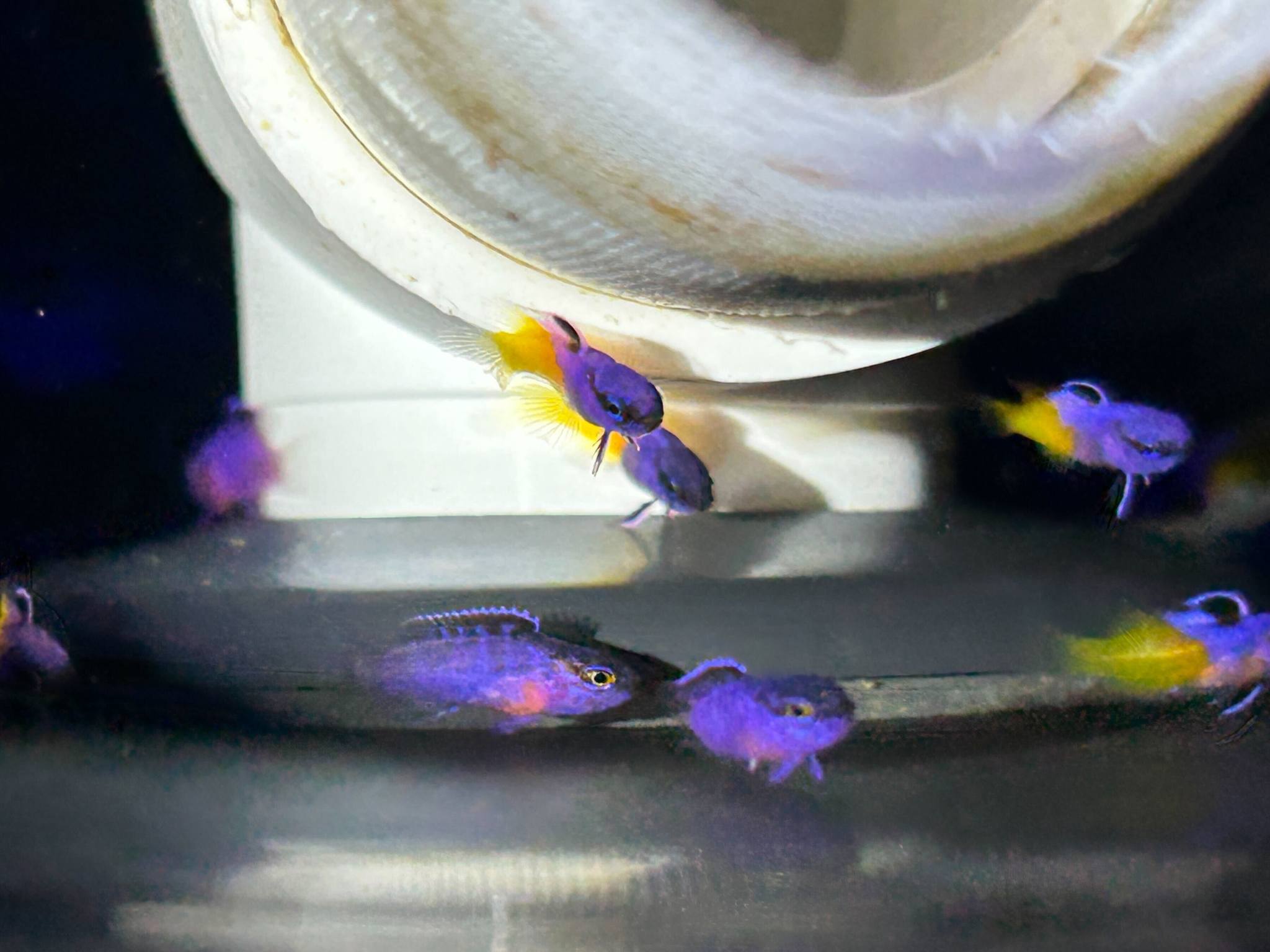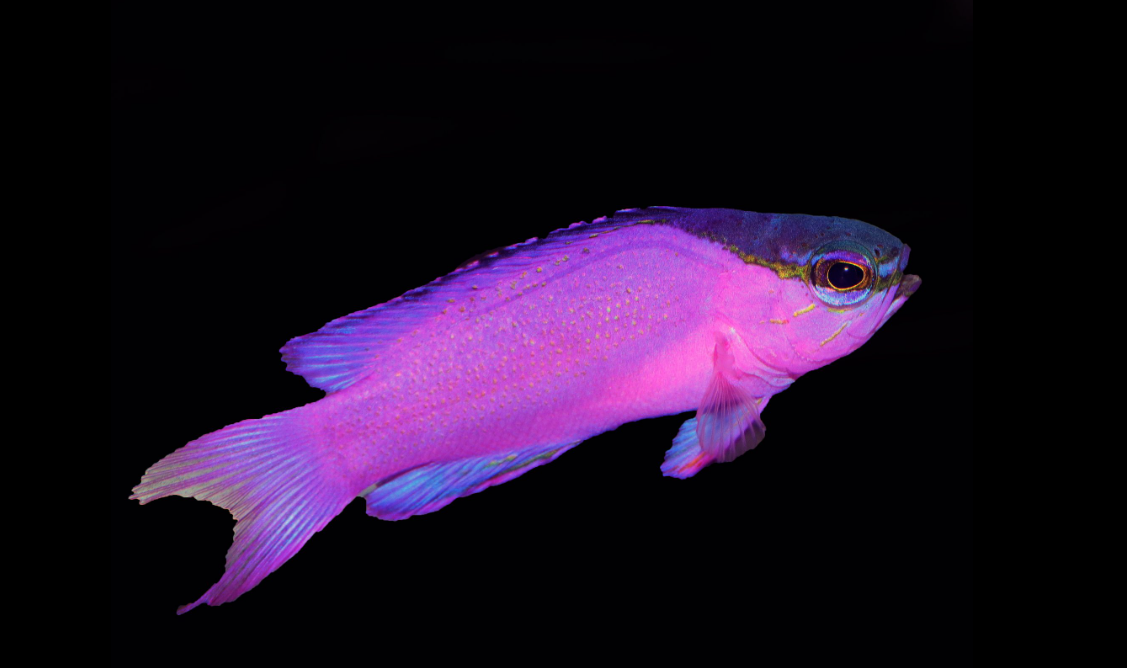When Biota announced that they had successfully bred the Blackcap basslet, Gramma melacara, we were keen to find out more. Larviculture specialist Todd Gardner filled us in with all the details:
Can you keep Blackcap basslets in pairs or groups in a reef aquarium?
Yes, pairs or harems will work fine as long as they have plenty of space, and you place them together while they’re still pretty small.
If so, are they likely to spawn in the home aquarium?
As with most fish, spawning is probably inevitable if you have a group of healthy individuals that are not stressed.
How long did it take you to succeed in breeding and raising Blackcap basslets?
I’ve actually raised them a number of times over the last decade and this is the third time we’ve gotten some through at Biota NC. This is just the first time we’ve had enough that we were able to offer them to the public.
Do you supply any other Basslets/Grammas captive bred?
Yes, Gramma loreto and Gramma dejongi. As far as I know, this is the first time that three captive-bred Gramma species have been available at the same time.
What sort of breeder are they? Substrate/cave spawner? Mouthbrooder? Broadcast spawner?
As with other Gramma and Lipogramma species, they build a nest in a crevice and attach their eggs to the walls.
Does the male or female show any parental care?
The male takes on most of the nest tending and allows one or more females limited access, mostly to deposit eggs.
How many fry can each spawning produce?
During a spawning cycle, a relatively small number of eggs are deposited into the nest at a time, but over several days the clutch size can get to be over 1000. The age, size, and condition of the female will dictate spawn size though.

Is it difficult to raise Blackcaps from eggs?
In general, Gramma larvae are similar to Pseudochromis in terms of care and hardiness, but egg collection and hatching are considerably more difficult.
How long does it take to raise them to a saleable size?
They reach settlement in about 5 weeks. Then it takes at least another two months before they are large enough to ship.
What size are the captive-bred Blackcap basslets when offered for sale?
This can vary. I try not to ship Grammas until they reach about 2cm, but when demand outpaces supply they sometimes go out at a smaller size.
What’s the most difficult species you guys breed and how do the Blackcaps compare to them?
At Biota NC, the Flathead perch may be the most difficult species that we regularly produce as their larval period is 40-90 days, and they have some quirks that complicate husbandry in the later stages.
Blackcaps are more difficult in the early stages and their nests are just different enough from the other Grammas that egg collection and incubation require an entirely different protocol.
Are there any other Basslets on your list of species to captive spawn?
Our primary goal right now is to get better at producing the three Gramma species we have, and I think those are the best species to focus on in terms of marketability.
At some point, it would be fun to revisit Lipogramma, but they need slightly cooler water, which makes them less suitable for the average hobbyist. Once we’ve achieved some other goals, Liopropoma might be worth taking on again, but my personal holy grail fish to attempt is the Bladefin basslet, Jeboelkia gladifer, mainly because I’m dying to see how its larval development compares with other Serranids.
It would be a poor choice from a business perspective though! It’s not nearly pretty enough to sustain its insanely high price once there are a handful of them in circulation, so you may never get a return on your initial investment.
How many captive-bred fish species does Biota now offer?
We’ve had nearly 100 fish species bred by Biota. We’ve also produced many invertebrate species, making the total number of species produced by Biota well over 100.
Image credits Biota




